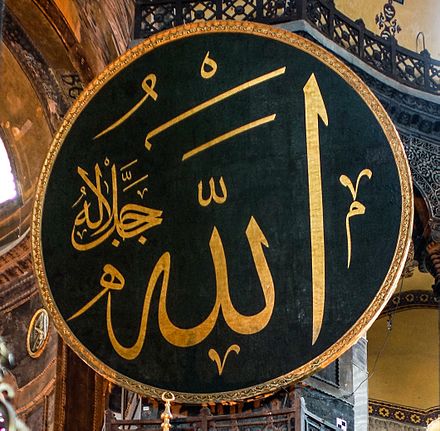In a world marked by uncertainty, shifting loyalties, and the constant search for security, the Islamic declaration that “Allah alone is sufficient—no one else” stands as a timeless beacon of faith. This conviction is not merely a theological statement but the very foundation of a believer’s worldview, emotional resilience, and spiritual contentment.
The Centrality of Tawhid: Allah’s Oneness and Sufficiency
At the core of Islam lies Tawhid, the doctrine of the oneness of Allah. This concept is the axis around which all Islamic beliefs and practices revolve. As the Qur’an proclaims:
“And your god is one God. There is no deity [worthy of worship] except Him, the Entirely Merciful, the Especially Merciful.”
(Qur’an 2:163)
Tawhid is not simply the belief that there is only one God, but that Allah is unique, indivisible, and absolutely self-sufficient. He is the Creator, Sustainer, and Controller of all that exists, and nothing in creation shares in His divinity or power.
To ascribe any form of partnership to Allah (shirk) is considered the gravest sin in Islam, for it undermines the very essence of faith.
Allah’s Sufficiency in the Qur’an
The Qur’an repeatedly affirms that Allah alone is sufficient for His servants, both in times of ease and hardship. The Prophet Muhammad (PBUH) and his companions (RA) drew strength from this truth, finding solace and courage in the face of adversity.
“Is Allah not sufficient for His servant?”
(Qur’an 39:36)“And upon Allah let the believers rely.”
(Qur’an 14:11)
These verses remind believers that ultimate reliance and trust (tawakkul) should be placed in Allah, whose wisdom and mercy encompass all things.
The Prophetic Example: Reliance on Allah Alone
The life of the Prophet Muhammad (PBUH) is a living testament to the principle of Allah’s sufficiency. In moments of tremendous trial—whether facing opposition in Makkah, enduring the siege of Ta’if, or leading the outnumbered Muslims at Badr—the Prophet (PBUH) turned to Allah alone for support.
A famous hadith from Sahih al-Bukhari recounts the Prophet’s (PBUH) words of reliance:
“Allah is sufficient for us, and He is the best disposer of affairs.”
(Sahih al-Bukhari, Book 65, Hadith 4864)
This phrase, uttered by the Prophet Ibrahim (AS) as well, became a rallying cry for believers throughout Islamic history.
Understanding Tawhid: The Three Dimensions
Islamic scholars describe Tawhid in three complementary aspects:
- Tawhid al-Rububiyyah (Oneness of Lordship): Allah alone creates, sustains, and governs the universe.
- Tawhid al-Uluhiyyah (Oneness of Worship): Only Allah is worthy of worship and devotion.
- Tawhid al-Asma wa’l-Sifat (Oneness of Names and Attributes): Allah’s names and qualities are unique and incomparable.
“Say: He is Allah, [who is] One, Allah, the Eternal Refuge. He neither begets nor is born, nor is there to Him any equivalent.”
(Qur’an 112:1-4)
Reader Questions: Exploring the Depth of Allah’s Sufficiency
1. What does it mean to say “Allah alone is sufficient” in daily life?
It means placing complete trust in Allah’s wisdom, mercy, and power—seeking His help before all others and accepting that only He controls outcomes.
2. How does belief in Allah’s sufficiency affect mental and emotional well-being?
It grants peace, reduces anxiety, and fosters resilience, knowing that one’s affairs rest in the hands of the All-Knowing and All-Powerful.
3. Is seeking help from people or using worldly means contrary to this belief?
No. Islam encourages using lawful means and seeking help, but the heart’s reliance must remain on Allah alone, recognizing that all means are ultimately under His control.
4. What is the danger of associating partners with Allah (shirk)?
Shirk is the gravest sin, as it denies Allah’s unique sufficiency and undermines the foundation of faith.
5. How can one strengthen their reliance on Allah alone?
Through regular remembrance (dhikr), prayer, reflection on the Qur’an, and following the example of the Prophet (PBUH).
Contemporary Relevance: Living Tawhid in the Modern World
In today’s interconnected but often turbulent world, the belief that “Allah alone is sufficient” is a source of stability and hope. Whether facing personal loss, societal pressure, or global crises, Muslims are reminded to anchor their hearts in Allah’s sufficiency.
- Mental Health: Trust in Allah alleviates despair and anxiety, fostering patience and gratitude.
- Social Justice: Relying on Allah empowers believers to stand for truth, even when support is scarce.
- Material Pursuits: While striving for success is encouraged, ultimate contentment comes from knowing that sustenance and outcomes are in Allah’s hands.
Key Takeaways
The declaration that “Allah alone is sufficient—no one else” is more than a creed; it is a lived reality for those who seek peace, purpose, and salvation. It calls believers to:
- Anchor their trust in Allah, not in fleeting worldly supports.
- Guard their hearts from shirk in all its forms.
- Seek Allah’s help in every affair, big or small.
- Remember that true strength, security, and success come only from the Creator.
“And whoever relies upon Allah—then He is sufficient for him.”
(Qur’an 65:3)
In moments of uncertainty or fear, pause and remember: Allah, the One, the Eternal, is closer to you than your own heartbeat. Let this conviction shape your prayers, your choices, and your outlook on life. The world may change, but the sufficiency of Allah remains—timeless, boundless, and absolute.
Let us renew our commitment to Tawhid, making Allah the center of our hearts and the ultimate refuge in every circumstance. For in Him alone is true sufficiency, and in His remembrance do hearts find rest.






